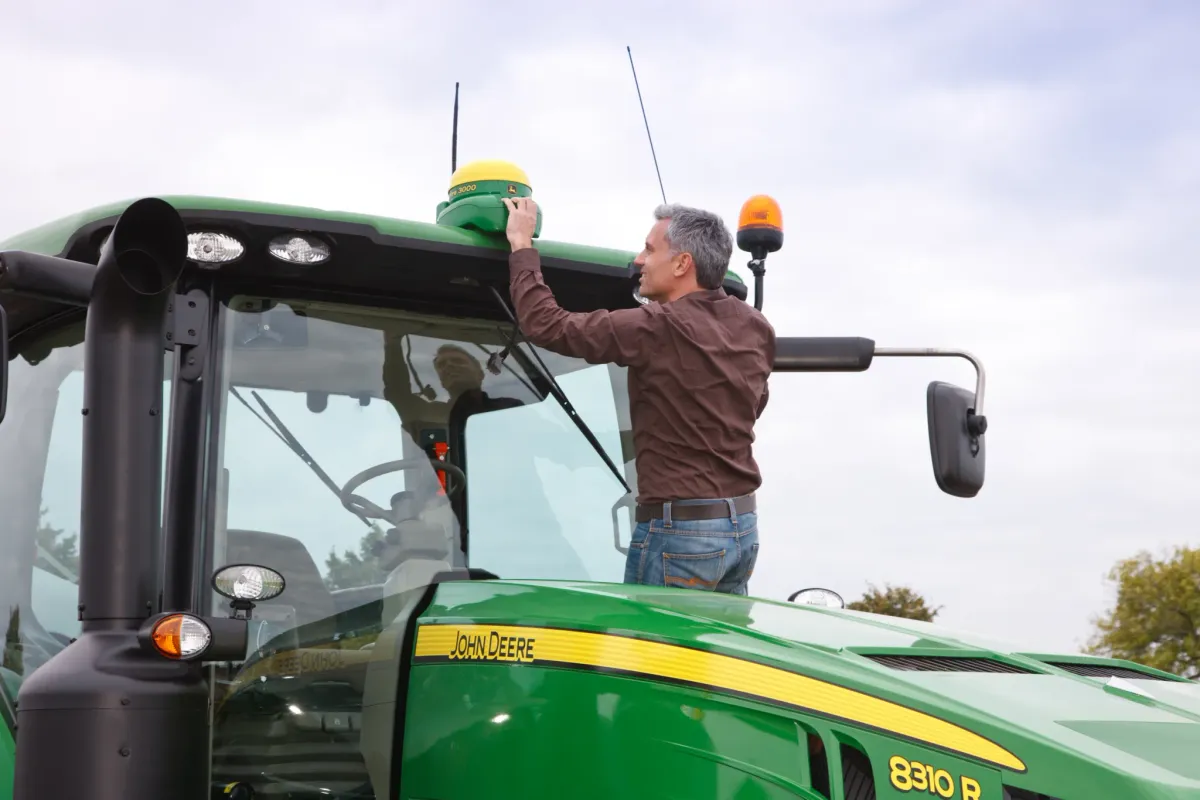- Monkey Wrench
- Posts
- Fart Apps, Vuvuzelas, and ChatGPT
Fart Apps, Vuvuzelas, and ChatGPT
There's a lot of hype around AI. What's actually useful and what will become our current moment's "I Am Rich?"

It's easy to feel overwhelmed by the recent explosion of artificial intelligence.
Go on any news site and type in “AI”, and you’ll be greeted by thousands of stories on AI's impact across almost every area of life, from music and sports to politics and parenting.
The current AI hype feels a lot like the excitement that surrounded the App Store's arrival on the iPhone.
I always saw the slogan “there’s an app for that” as more than just a marketing gimmick; it felt like a challenge to find the limits of what apps could do.
I spent ten years of my life getting paid absurd money to figure out what problems could be better with a well-constructed mobile app.
I built apps for improving billiards skills, staffing dental offices, preventing teens from texting while driving, generating construction material estimates, and finding the optimal styling gel for different hair types.
These apps represented significant investments that were made because people believed others would also find the value in them. Many apps did solve problems and gained customer bases to support ongoing development.
But for every app we built, we turned away a dozen others, often because the problem wasn't worth paying to solve.
Over time, the hype faded as people saw the limitations of “there’s an app for that.” Apps remain useful tools, but now they’ve become a tool in a toolkit that people can use to solve a problem.
In 2024, apps no longer inspire the awe they did in 2009. They’re just… there.
Changed insurance providers? Go and download the new provider’s app.
Headed downtown for an event? Scan the QR code to pay for parking.
The experimentation with mobile apps in the 2010s clarified the types of problems apps could solve, and now, it’s hard to name an app that’s dropped in the past five years that is as revolutionary as the ones that dropped in 2009.
Fast forward to today, and we're in a similar place with AI. Everyone is cramming AI into everything, trying to figure out what problems it is actually good at solving.
Experimentation with new technologies is important. We probably should be cramming AI into everything because nobody’s sure what the killer use case for these large language models will be. After all, even AI experts aren’t exactly sure how this stuff works.
When the App Store launched, there were endless amounts of fart apps and other novelties that nobody has on their phone anymore. (Did anyone else have the Vuvuzela app for the 2010 World Cup on their phone?)
Today, AI is undergoing the same treatment. I’m sure you’re seeing AI crammed into every possible corner of your online life, from Snapchat’s AI friend to Canva’s generative AI features to your car dealer’s chatbot assistant.
Many of these novelties will fade, relegated as a meme to define a moment in the evolution of technology.
But through experimentation, we can figure out exactly where this stuff will fit into our lives.
This begs the question: how do you get started with experimenting?
Here are some ways I’ve used AI in the past week:
I received a quote from my mechanic on some repairs that I didn’t understand. I uploaded it to ChatGPT and asked it to review the estimate, explain what each part of the car did, whether a repair was necessary from a safety standpoint, and whether the price was fair in my city.
I heard the phrase “johnny-come-lately” a few times in the past week and had no idea what it meant. ChatGPT explained the origins of the phrase and offered some popular uses of it.
My father-in-law offered us a moped. I had a conversation with Claude about the long term expenses and operating costs of a moped, as well as key items I should look at before taking ownership of it.
At an Ethiopian restaurant, I didn't recognize the menu items. I snapped a pic of the menu and asked ChatGPT to summarize the items. When the food arrived, I took a picture, and it identified each dish for me.
Let’s be clear here: none of those problems are, like, real problems, you know? I didn’t need to know that stuff about johnny-come-lately, and I was so hungry that day that I would’ve eaten whatever was placed in front of me.
And all of those problems could have been solved by other means. I could’ve asked the server to explain each dish. I could’ve used Google to call up a bunch of other mechanics to get price comparisons.
But each interaction I described above was fun for me. I got reasonable answers to my neurotic set of questions nearly in real time. I felt confident and prepared when I discussed tie rod ends with my mechanic. I was able to enjoy my Ethiopian doro wot knowing it was made with berbere spices and niter kibbeh.
Standing here in 2024, I can’t be sure which implementations of generative AI will stick and which will go the way of the vuvuzela app.
But I sure do enjoy playing with this stuff and figuring it out for myself. I think if you gave it a shot, you’d enjoy it too.
Stuff worth reading
When I started working in tech in the early 2010s I began running in to idea guys. Upon discovering I was a developer, they would get very excited and pitch me their big idea for an app/website/service to see what I thought.
After receiving a polite reaction they would often say something like: “I think it would do really well, if I could only figure out how to get it made”. Like the idea was the main thing that mattered, and the pesky task of actually building it was an insignificant little bump along the road to success. At this point I would usually tell them that ideas are worth nothing, until they are implemented.
This post is brilliant. Sometimes, I use generative AI like I use cardboard as a way to prototype an idea.
Testing out an idea is the first step toward doing the countless hours of work needed to make an idea a real thing.
As I learned early on in my app consulting days: Ideas are worthless. Execution is everything.
Below all this hype, there’s a quiet revolution happening. I keep meeting new companies and seeing new products that make practical use of LLMs. They use them to solve narrow problems and prioritize consistency and efficiency over giant, all-singing, all-dancing models. I keep meeting people who are amplifying their capacity and abilities by handing simple, mundane tasks to AIs, which they then refine and improve. AI-assisted coding has been a boon for early-stage start ups, which are shipping products with a maturity and polish beyond their years.
This is the world of Sober AI.
Sober AI is an incredible concept, and ties in nicely with the point I was trying to make earlier about all the AI hype.
Generative AI can be used to solve a lot of problems. The key is to (a) identify worthwhile problems (see the above article), and (b) figure out how generative AI fits in as a component of the solution.
Most problems that I’m solving these days use generative AI as one small step in the entire system. It’s not like I’m saying “okay AI, build this entire app for me” and it’s done.
It’s more like: “okay AI, here’s a bunch of text, tell me if there’s anything in here that mentions an ACL repair.” If the AI finds mention of an ACL repair, I can then ask it follow up questions like “what kind of tear was it” and “tell me what the graft source was”.
I can then take all of those answers to those questions and do something useful with it using other tools.
That’s the real magic of AI.
You should use AI like you use spices in cooking. A fantastic apple pie uses nutmeg, but you don’t see anyone going around eating nutmeg pie.
The solar storm that brought the aurora borealis to large parts of the United States this weekend also broke critical GPS and precision farming functionality in tractors and agricultural equipment during a critical point of the planting season, 404 Media has learned. These outages caused many farmers to fully stop their planting operations for the moment.
This is a big deal, but like many technical things that are a big deal, I worry that you’ll only hear about it when the outfall of the problem manifests six months from now, just in time to blame it on a politician and not actually make progress towards solving it.
Here’s the truth: it would only take one major solar storm to cause major power grid disruptions, disable our communication infrastructure, and cause GPS to stop working.
These are the sorts of problems we should be collectively paying attention to and investing in mitigating.
I find it hard to not catch every episode of CityNerd, a YouTube channel from a former city engineer who rants about poor infrastructure design. Which is extremely my kind of content.
If you’re here in the Twin Cities and are not aware of the history of I-94, this video is a great launching point. It also outlines the work that Our Streets is doing to imagine a better use of this space, which admittedly looks super compelling.
By the way, I was one of the participants of CityNerd’s event here in Minneapolis a month ago, and if you look closely in this video, you can see me in the front row of the session. I signed up too late to join in the bike ride though, which really bummed me out.
I’m still figuring things out here, and since almost all of you are people I personally know, I would be very interested in your honest feedback.
If you have a minute, shoot me a note with what you liked and what you didn’t like. Should these be longer or shorter? Do you care what time of day it comes out? Are there articles or topics you’re more interested in hearing me rant about? Do the kids even read newsletters anymore?
That’s it for this issue of Monkey Wrench! Thanks again for reading. ❤️

